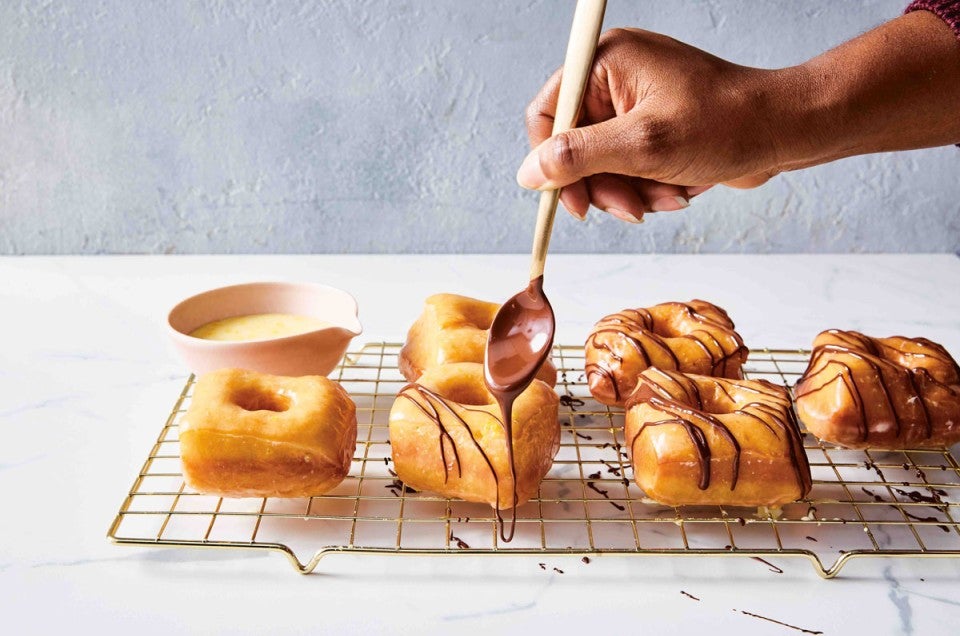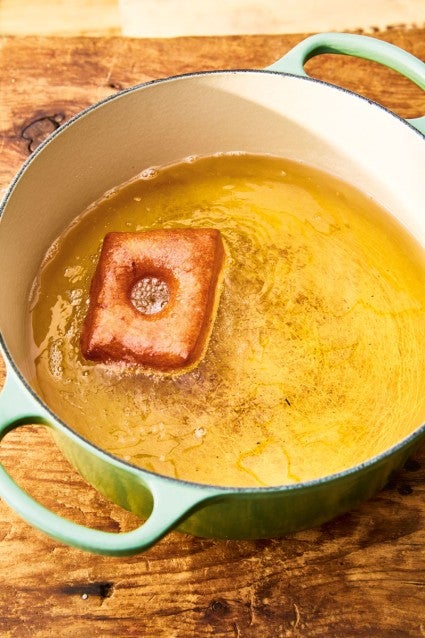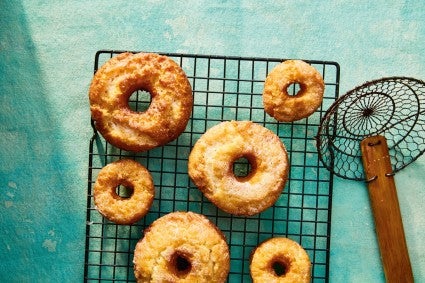


 Life Is What You Bake It author Vallery Lomas wants everyone to do a little more frying in their kitchen. So today, she’s taking over our regular column featuring 5 things you should know about baking: from tips to tools to questions you're always asking yourself in the kitchen.
Life Is What You Bake It author Vallery Lomas wants everyone to do a little more frying in their kitchen. So today, she’s taking over our regular column featuring 5 things you should know about baking: from tips to tools to questions you're always asking yourself in the kitchen.
* * *
Frying desserts can be intimidating. Though many people fearlessly fry chicken and fish for dinner, when it comes to doughnuts and beignets, even the most confident home bakers can become skittish.
I suspect there are a few reasons for this — one is that we’re quite comfy with our ovens as the sole kitchen appliance for transforming batters and doughs into cakes and breads. And unlike an oven, frying requires our undivided attention — it does involve managing a hot vat of oil, after all.
If the oil becomes too hot, whatever you’re frying will burn on the outside before cooking through on the inside. On the other hand, if the oil isn’t hot enough your goodies will soak up excess oil in their efforts to simply finish cooking, resulting in a greasy final product. Unlike most baking, there’s no “set the timer for 20 minutes, test it with a cake tester, and voilà!” with fried treats.
But here’s the thing: Frying at home is worth it. There’s nothing quite like waking up on a snowy morning and frying up a batch of pillowy, piping hot beignets. If you’re still hesitant, the five tips below — inspired by my new cookbook, Life Is What You Bake It — will give you the confidence and know-how to fry your favorite sweet treats at home.
(Heads up: At King Arthur, we only recommend the cookbooks that we, as bakers, truly love. When you buy through external links on our site, we may earn an affiliate commission.)

Choose a refined oil that’s neutral in flavor and can withstand the high temperatures of frying. Canola oil is ideal for frying sweets — it’s light in color, practically tasteless, and has a very high smoke point. Refined sunflower oil and vegetable oil are also great options.
There’s no need to buy a deep fryer — a Dutch oven works excellently because it helps maintain the oil temperature consistently due to the pot’s cast iron material, which ensures even heating. You also want your doughnuts to have room to expand and bob around in the oil, so a larger pot will enable you to fry up to three or four doughnuts, beignets, or hand pies at a time.
The most important key to frying is maintaining the temperature of the oil. This is as essential as making sure your oven is set to the correct temperature while baking. If you fry an item too quickly, or too slowly, the results will range from burnt and doughy to heavy and greasy. The easiest (and most precise!) way to monitor the oil temperature is with a thermometer. Whether you choose a clip-on or an instant-read one, a thermometer will ensure that you stay within the optimal temperature range to cook your goodies. (Different recipes vary, but you’ll usually be frying between 325°F and 375°F.)
If your oil becomes too hot, there are a few ways to quickly cool it down so you can get back to frying. Turn the stove heat off or down, remove your frying vessel from the hot stove, fry off some dough scraps (the cool dough will bring down the temperature of the oil), or pour some room-temperature oil into your vessel to lower the overall temperature.
If your oil isn’t hot enough, you can crank up the setting on your stove, but pay close to attention so that the oil doesn’t get too hot. You should also check the temperature of the oil before each batch of doughnuts, and even during the batch, so that you can adjust the heat to ensure you stay in the Goldilocks temperature range.
Note: Beware of frying contraptions where you “set” the temperature. Few of these appliances have the capacity to actually maintain a specific temperature consistently, so always double check with a thermometer.
Pay attention to the timing listed in the recipe you’re using. As long as you monitor the temperature of your oil, you should be able to use the time ranges in the recipe as a good guide. But just like with all baking, use your kitchen intuition as well! You want your goodies to reach a lovely golden brown color, which is a good indicator that it’s time to flip or remove them from the oil altogether. Don’t just rely on written times, but use your senses to determine if something is cooked all the way through.

Don’t let your goods stay in the oil any longer than they need to. Use a spider (a skewer or fork also works) to remove the item from the oil, allowing the excess oil to drip back into the pot. Immediately transfer the fried good to a paper towel-lined plate, which will help absorb any excess oil.
Lastly, if you're making doughnuts that you'll glaze or coat in granulated sugar, be sure to coat while the treat is still hot, which will allow for a more even distribution of the topping. (There’s way more leeway with beignets — no need to dust with confectioners' sugar until you’re ready to serve.)
Lastly, the most important part of frying at home is staying safe while doing so. Take precautions to protect any exposed skin from being splattered with hot oil. Wear long sleeves, pants, and shoes, and make sure your chest is covered. You can even use oven mitts to protect your hands. When it comes time to fry your dough, gently lower the item into the pot to prevent any hot oil from splashing, especially near your face and eyes.
Armed with these tips, I hope you're ready to get frying. Start heating your oil and put these tips to the test with classic yeast-raised doughnuts, old-fashioned cake doughnuts, beignets, or sufganiyot.
Cover photo by Linda Xiao, courtesy of Life Is What You Bake It.

